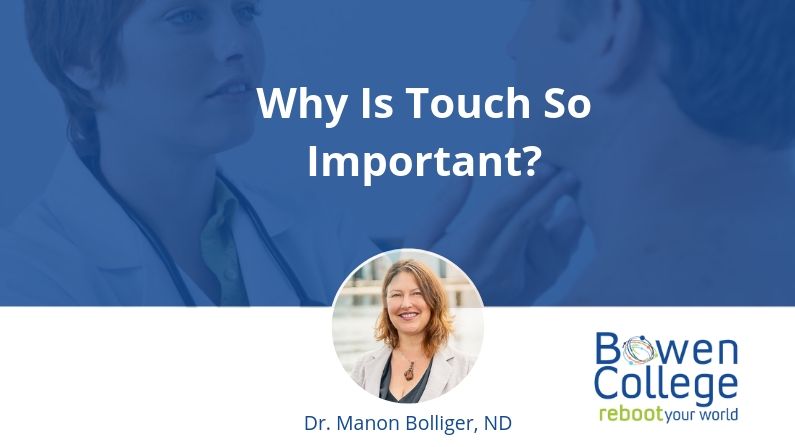At the British Fascia Symposium, I had the pleasure of listening to many talented professionals, researchers and scientists. In particular, I wanted to share the insights of Carol M. Davis and Robert Schleip, as well as incorporate my own experience as a clinician and a patient.
1. Studies show the ill effects of touch deprivation.
Research done on young children, the elderly or even primates in clinical experiments all come to the same conclusion. Touch affects one’s emotional and physical well-being. To remedy this, there are a number of factors that influence therapeutic outcomes: type of touch, depth of touch, pauses between touch, moments to reflect after tactile stimuli for the client level of comfort, and therapeutic context.
2. The skin is our largest organ.
At first glance, we know the skin is the largest surface of our body. It’s the main point of tactile interaction between people. What might be less obvious is that the skin is actually embedded in the fascia. Some consider this the “outermost layer” of the fascia — even though the fascia itself doesn’t have layers, per se, because it’s shaped like a matrix.
The living fascia can be considered a self-contained biotensegrity matrix which experiences constant stress, tension and compression. Yet within the self-contained fascial biotensegrity, it also allows the flow and movement of different tissues and substances including lymphatic vessels, nutrients, blood vessels, and the endocrine system hormones.
This is referred to as the ground substance, and it is able to self-regulate allowing us to maintain a narrow range of pH and temperature crucial for survival and optimal function.
3. Touch supports the ground substance’s ability to manage overload.
When we experience injury or toxic load, the ground substance is disrupted. We become aware of this disruption when we feel either tightness, pain, inflammation, and blocks. The fascial biotensegrity responds to pressure, shearing action and motion. It also responds to what is called the piezoelectric phenomena in which communication signalling occurs through infrared energy (e.g. the connection from contact between a therapist’s hand with a patient’s skin).
The ground substance or extracellular matrix is the immediate environment of all of our 35 to 75 trillion cells. For anything to get in and out of a cell, it must pass through the fascia that the cell is embedded within. When fascia is restricted, cellular transmission is interrupted or shuts down completely.
4. The fascia has many important sensory functions.
While classical musculoskeletal medicine regards fascia mostly as an inert packing organ, new histological investigations reveal the opposite is true. The fascia is one of our richest sensory organs. In fact, it can be seen as our most important organ for experiencing our own body.
Probably the most interesting sensory function of fascia is its role in interoception. Interoception encompasses more than the afferents of our so-called enteric brain or “gut brain.” It also involves many other perceptions that sense our internal environment and compare these somatic sensations with the physiological and emotional needs perceived by our mind. In contrast to proprioceptive stimuli, these sensations are not projected primarily to the somato-motor cortex of the forebrain, but rather to the insular cortex.
What does this all mean?
While deceptively simple, touch affects our bodies on a deeper level than most people think. It goes beyond just the surface of our skin triggering the body to heal and repair itself. In the next article, we discuss the significance of interoception further.









